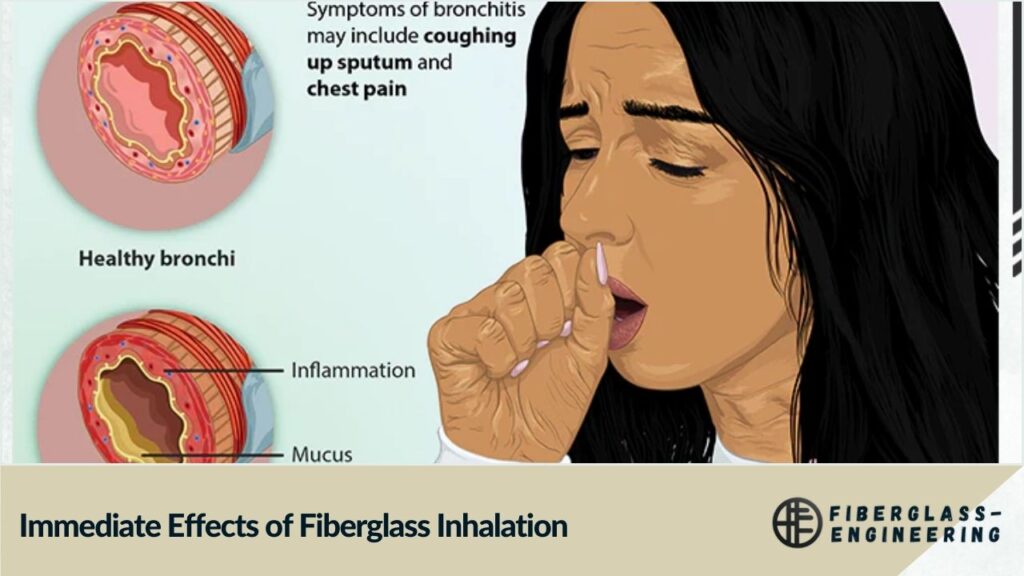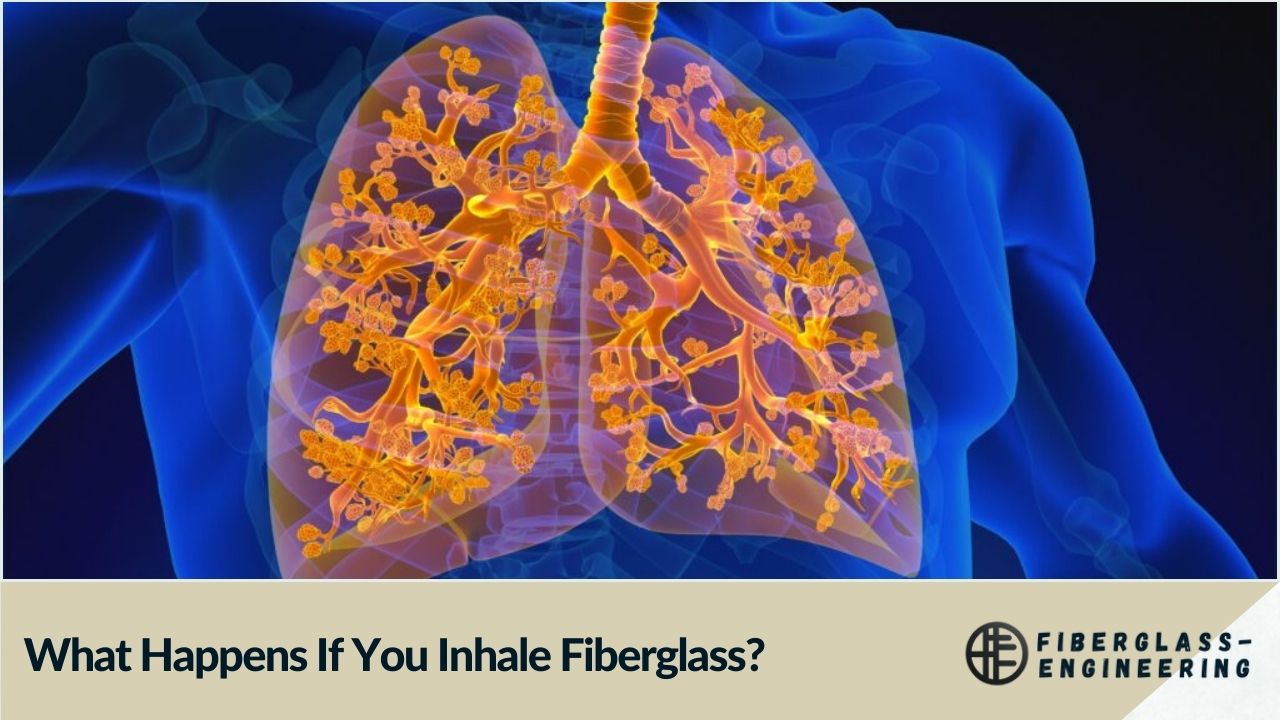Fiberglass, a widely used material in construction and insulation, can pose significant health risks when inhaled. Understanding the potential consequences of fiberglass inhalation is crucial for those who work with or are exposed to this material. This article delves into the effects of inhaling fiberglass and provides essential information on prevention and treatment.
Understanding Fiberglass
Fiberglass is a synthetic material composed of extremely fine glass fibers. It's commonly used in various applications, including:
- Home and building insulation
- Electrical insulation
- Reinforcement for cement and plastic
- Thermal and acoustic insulation
- Heat-resistant materials
While fiberglass is an excellent insulator and has many beneficial properties, it can be hazardous when its particles become airborne and are inhaled.
Exposure to Fiberglass
There are two primary ways individuals can be exposed to fiberglass:
Occupational Exposure: This is the most common form of exposure, affecting workers who install or remove insulation, or those involved in building maintenance and repair. These individuals are at a higher risk of inhaling fiberglass particles.
Non-occupational Exposure: This can occur in homes, schools, or offices where fiberglass-containing materials are present. Even if you're not directly handling fiberglass, airborne particles can be carried by air currents within a building.
Immediate Effects of Fiberglass Inhalation

When fiberglass is inhaled, it can cause several immediate effects:
- Respiratory Irritation: The most common symptom is irritation of the upper respiratory tract, including the nose and throat. This can lead to coughing, wheezing, and difficulty breathing.
- Eye Irritation: Fiberglass particles can cause redness, itching, and watering of the eyes.
- Skin Irritation: While not directly related to inhalation, skin contact with fiberglass can cause itching, redness, and rashes.
- Throat and Nasal Passages: Inhaled fiberglass can cause a sore throat and painful nasal passages.
Long-term Effects of Fiberglass Inhalation
While the immediate effects of fiberglass inhalation are well-documented, the long-term effects are less clear and have been the subject of ongoing research:
- Respiratory Issues: Prolonged exposure to fiberglass may exacerbate existing respiratory conditions such as asthma or bronchitis.
- Lung Damage: Some studies suggest that long-term inhalation of fiberglass particles could potentially lead to lung scarring or other forms of lung damage.
- Cancer Risk: While early studies raised concerns about a potential link between fiberglass exposure and cancer, more recent research has not consistently shown an increased risk. The International Agency for Research on Cancer (IARC) has classified glass wool fibers, a type of fiberglass, as "not classifiable as to their carcinogenicity to humans."
What Happens in Your Body When You Inhale Fiberglass?
When fiberglass is inhaled, the body's response depends on the size of the fibers:
Large Fibers: These typically get trapped in the upper airway and are removed through coughing, sneezing, or other bodily defense mechanisms.
Smaller Fibers: These can travel deeper into the lungs. Some may be expelled through the body's natural clearance processes, while others may remain in the lungs or thoracic region.
The presence of fiberglass in the respiratory system can trigger an inflammatory response. The body recognizes these particles as foreign and attempts to eliminate them, which can lead to irritation and other symptoms.
Factors Affecting the Severity of Fiberglass Inhalation
Several factors can influence the severity of the effects when inhaling fiberglass:
- Concentration of Fibers: Higher concentrations of airborne fiberglass particles increase the risk and potential severity of symptoms.
- Duration of Exposure: Prolonged exposure to fiberglass can lead to more severe and persistent symptoms.
- Size of Fibers: Smaller fibers can penetrate deeper into the respiratory system, potentially causing more significant issues.
- Individual Health Status: People with pre-existing respiratory conditions may experience more severe effects.
Prevention and Protection
To minimize the risks associated with fiberglass inhalation, consider the following preventive measures:
- Proper Protective Equipment: When working with fiberglass, always wear appropriate personal protective equipment (PPE), including:
- Respirators or dust masks
- Safety goggles
- Gloves
- Long-sleeved shirts and pants
- Adequate Ventilation: Ensure proper ventilation in areas where fiberglass is being handled or installed.
- Proper Handling: Minimize the disturbance of fiberglass materials to reduce the release of airborne particles.
- Regular Cleaning: Use a HEPA vacuum cleaner to remove fiberglass dust and particles from work areas.
- Proper Disposal: Follow guidelines for the safe disposal of fiberglass materials and waste.
What to Do If You've Inhaled Fiberglass
If you suspect you've inhaled fiberglass:
- Remove Yourself from the Area: Immediately leave the area where fiberglass exposure occurred.
- Rinse Your Mouth and Nose: Use clean water to rinse your mouth and nose to remove any lingering particles.
- Shower and Change Clothes: Take a shower and change into clean clothes to remove any fiberglass particles from your skin and hair.
- Monitor Symptoms: Pay attention to any developing symptoms such as persistent coughing, difficulty breathing, or skin irritation.
- Seek Medical Attention: If symptoms persist or worsen, consult a healthcare professional.
Conclusion
While fiberglass is a valuable material in many applications, it's crucial to understand and respect its potential health risks. By taking proper precautions and being aware of the symptoms of fiberglass inhalation, you can minimize the risk of adverse health effects. If you work with fiberglass regularly or suspect exposure, don't hesitate to consult with a healthcare professional for personalized advice and care.
FAQs
- Can inhaling fiberglass cause cancer?
Current research does not consistently show an increased cancer risk from fiberglass exposure. - How long do fiberglass particles stay in your lungs?
Some particles may be expelled quickly, while others can remain in the lungs for longer periods. - What are the immediate symptoms of fiberglass inhalation?
Common symptoms include coughing, wheezing, and irritation of the eyes, skin, and throat. - Is fiberglass more dangerous than asbestos?
Fiberglass is generally considered less hazardous than asbestos, but precautions should still be taken. - How can I protect myself from fiberglass exposure?
Wear appropriate protective equipment and ensure proper ventilation when handling fiberglass materials.

